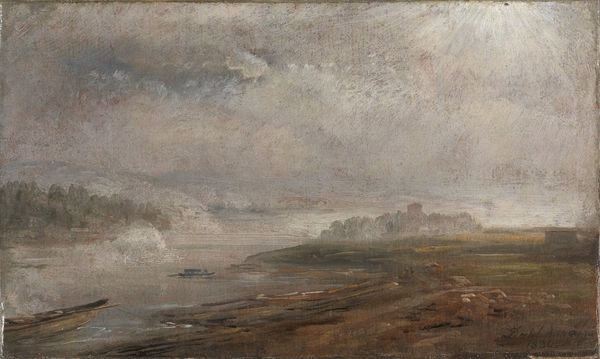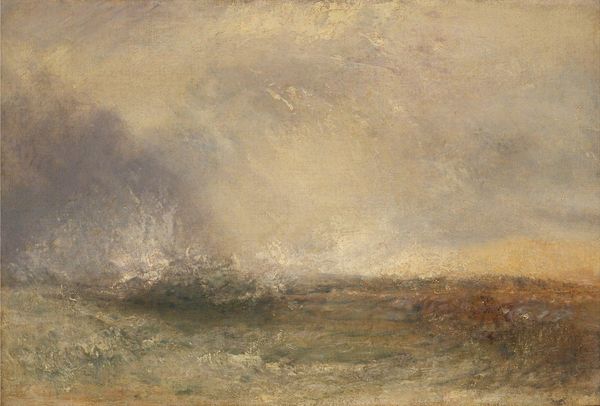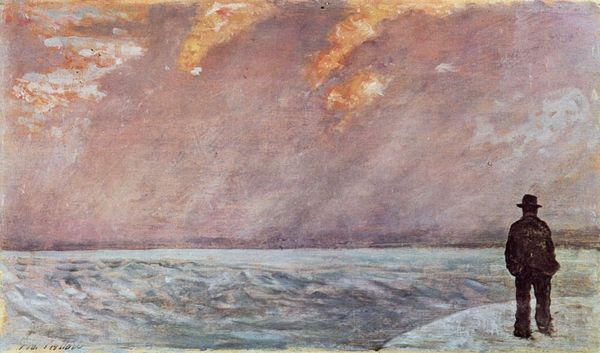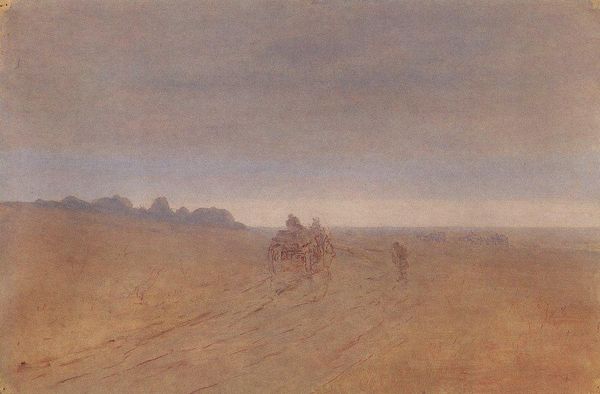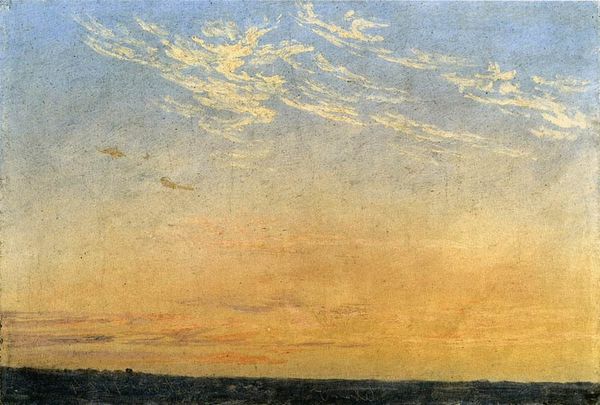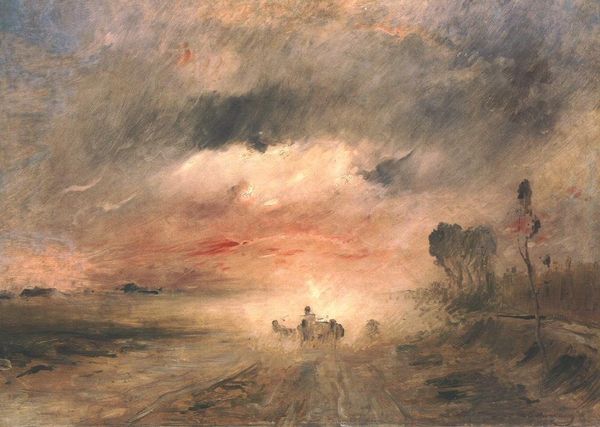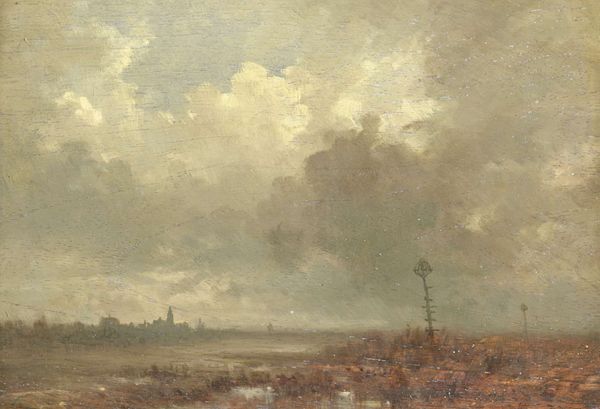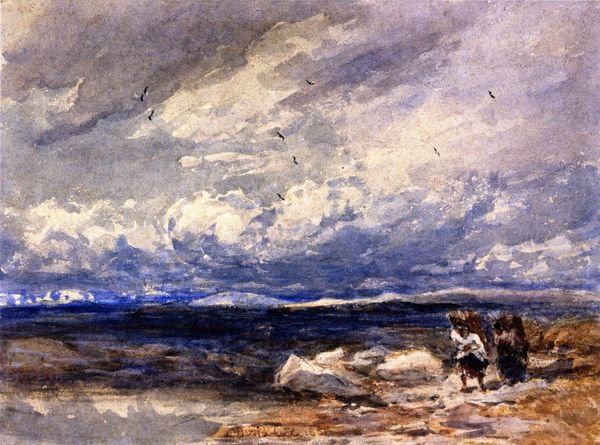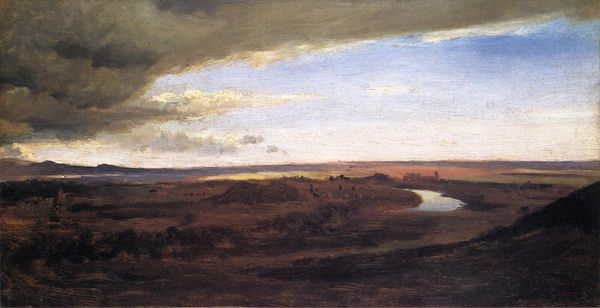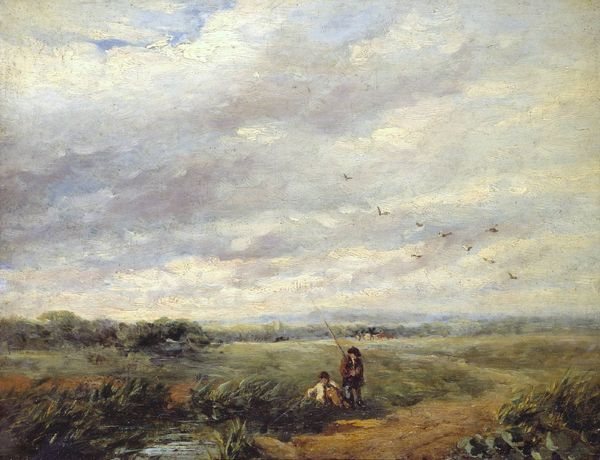
Copyright: Public domain
Curator: Well, here we have Frederick George Cotman's "Sunset, St Ives, Cornwall," painted around 1915. Cotman, working en plein air, really captures a sense of place with this watercolour. Editor: It's brooding, isn't it? That pervasive ochre washes the scene in a somber light. It’s hard to feel a Cornish sunset as something joyful, at least initially. Curator: Interesting. While it is muted, I find the colours convey a subtle warmth, like a lingering memory of the sun's energy. Think about sunsets as a potent symbol, right? Closure of the day, a moment of reflection... What narratives and values do you think this image could evoke in that era? Editor: Early 20th century... World War I, a period defined by loss, anxiety. Visually, I notice that there are two figures on the right tending the field, and they feel isolated in the large landscape. This image feels imbued with the social experience of the time, a world on the precipice. Curator: Yes, absolutely. And observe how Cotman uses the medium itself; watercolour's inherent transparency to mirror the sky’s ethereal quality, its blending capturing the mutability of the moment. Editor: The application definitely lends it an atmospheric quality. How much does the choice of Cornwall matter, here? St Ives specifically has a long and storied artistic history; to depict it at sunset is quite weighted, potentially symbolizing endings and continuities. Curator: Cornwall as a retreat and inspirational space for artists – absolutely! Painting it represents a continuous dialogue. And the recurring symbolic theme of sunsets throughout art history provides additional cultural weight to Cotman’s painting. The watercolour acts as both medium and metaphor, layering the physical world with memory, emotion, cultural context... Editor: I can see that; it acts as more than a rendering of nature but evokes social anxieties and artistic inheritance, as well. I’ve got a new perspective now! Curator: Right! The layering brings many complexities together, wouldn’t you say? Editor: Precisely. It invites one to contemplate both historical conditions and our continuous symbolic understanding of mortality and history.
Comments
No comments
Be the first to comment and join the conversation on the ultimate creative platform.
